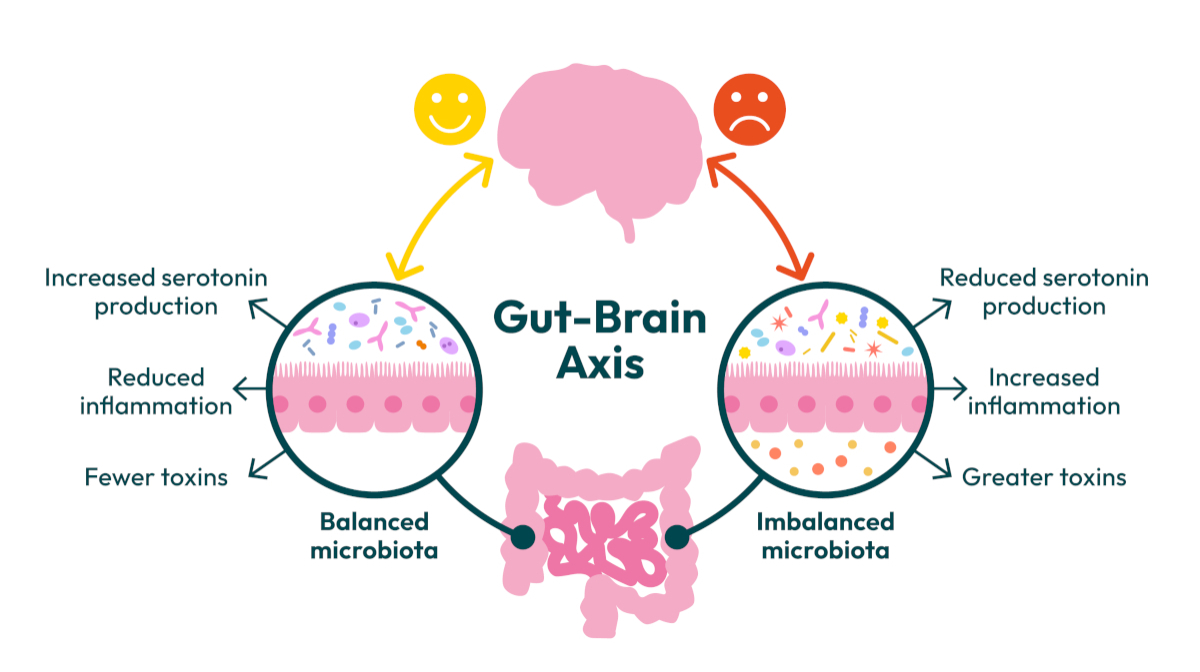
Support your mental Wellbeing
Looking after your mental wellbeing doesn’t have to mean big lifestyle changes. Research shows that simple daily habits – like consistent sleep, joyful movement, colourful foods, time in nature, and meaningful connection – can boost mood, ease stress, and build resilience. This article explores eight practical, science-backed practices to support your mental health. 1: Sleep […]

The Gut-Brain Connection: How Does Digestive Health Influence Mood?
For many years we’ve been aware of the link between the health of our brain and the corresponding action of our gut. Think back to when you took an exam or went for an interview, that nervous tension probably stopped you eating for a short while and may have even given you a fluttery butterfly […]

Signs Your Vaginal Microbiome Might Be Out of Balance (And What to Do About It)
Like our gut microbiome, the vaginal microbiome is understood to be important to a woman’s overall health.1 It has been described as an intricate and dynamic microecosystem, constantly undergoing fluctuations during both the menstrual cycle and the female life cycle.2 Although many changes to the vaginal microbiome are normal and healthy, others can result in […]

How to Take Bio-Kult: Dosage, Timing & Best Ways to Use Supplements
Once you have your hands on one of our Bio-Kult products, you may wonder how to best use it. Whilst the product’s packaging will provide directions for use that should be followed, often this guidance will offer some flexibility to account for your individual needs. There are a number of factors to consider when deciding […]
Our Author

Alice Liveing
Writer and expert

Rob Hobson
Writer and expert

Kim Plaza
MSc, BSc (Hons), MBANT, rCNHC, Registered Nutritionist

Matthew Hudson
MSc, BSc (Hons), Registered Associate Nutritionist (ANutr) Technical Advisor

Ellie Mason
Personal Trainer and Online Coach

Grace Kenworthy
Writer and expert

Dr. Erica Mulholland
MBChB Medical Doctor